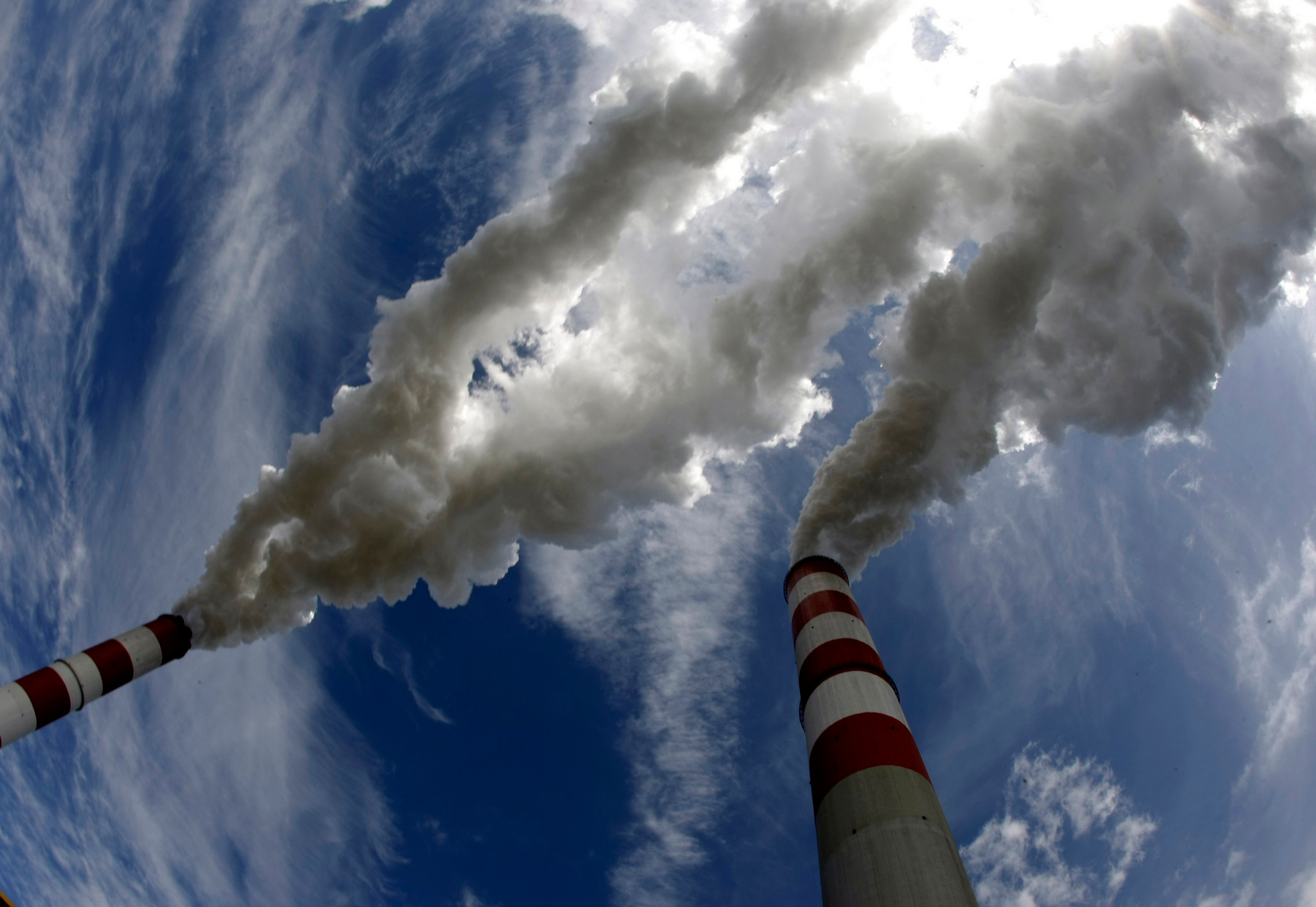2021 has become a pivotal year for Russia’s political stance on climate. Until now, Moscow has stood on the sidelines of the world’s struggle against global warming. But today, the highest levels of government are finally recognizing the necessity of decarbonization. While Russia’s climate policy revisions are on the right track, they still have more bark than bite.
Changing course on climate
Moscow’s foundational document on climate change is the 2009 Climate Doctrine, which officially recognizes global warming and the critical role of human activity. It calls for mobilizing science to forecast and adapt to climate change, developing renewable energy sources, and lowering carbon dioxide emissions.
However, detailed legislation with specific steps remains elusive. The real work on climate action only started in 2020, following Russia’s ratification of the Paris Climate Accord in 2019. Vladimir Putin’s address to the Federal Assembly in 2021, when he called for cutting Russia’s greenhouse gas emissions to beneath the European Union’s level, truly kicked off the climate conversation.
Last year’s development strategy for 2050 with low greenhouse gas emissions is already being reconsidered. While the initial draft projected an increase in CO2 emissions through 2030 under the best circumstances, the new version raises the bar with a stricter and sooner cap for Russia’s emissions.
In 2020 the government approved a «first stage» national plan for climate change adaptation through 2022, joining a portfolio of roadmaps and programs for supporting renewable energy sources like hydrogen.
Another climate policy under review is a 2020 plan for raising the Russian economy’s energy efficiency. One of the new proposals is capping CO2 emissions to 150 million tons per year.
In June 2021, the State Duma passed a bill to reduce greenhouse gas emissions. It grants companies the right to buy «carbon units» that could theoretically bring them government benefits, but they are required to do nothing more than report CO2 emissions over 150,000 tons per year.
Finally, the updated National Security Strategy from July 2021 for the first time declares the necessity of diversifying the Russian economy with low carbon technologies. The document also states that climate change is a direct threat to Russia’s national security.
Expanding renewable energy, or punishing it?
The overall principles in Russia’s new climate policy are mostly on point. But they are still far too cautious, putting off their decarbonization goals for the long term — or for completely undefined periods of time. There is barely any attempt to finance these goals, with the renewable energy program being a prime example.
Russia’s plan to develop renewable energy started in 2014 and was planned to last through 2024. Qualifying renewable energy projects could count on a 12% return of investment from wholesale customer payments. This led to the renewable share of Russia’s total energy production rising from nearly zero to 1.3%, although planners had projected nearly double that growth. With constantly missed deadlines and underwhelming production, the government reverted to its favorite tool for influencing markets: levying fines.
September 16, 2021 was supposed to be the selection deadline for renewable energy projects receiving second-phase state support through 2035. Renewable power plants are already facing tough regulation, such as losing 30−80% of revenue if they miss their production quota within the first year of operation. They also must deal with domestic production requirements — or else get fined 75−85% of revenue — while juggling mandatory exports abroad. Today’s renewable plants must export at least 5% of their output, and no less than 15% by 2035. Failing to meet this quota entails a fine of 10−33% of total revenue. Energy producers and distributors alike may face Moscow’s wrath if they purchase materials from fined suppliers.
This tough-handed approach is clearly making investors nervous. Weather conditions make it uniquely difficult to forecast exact output figures for renewable power plants. Foreign buyers must also manage this risk, which complicates setting mandatory levels for domestic and foreign production.
Russia’s renewable energy cannot thrive under such punishment. In two to three years, the EU’s carbon border adjustment tax will take effect. The trend may not stop with Europe. China, for example, pledged to achieve carbon neutrality by 2060 last year. In July 2021, Beijing launched a carbon emission trading scheme, demonstrating that China will not remain a safe market for the world’s coal and oil suppliers.
This leaves no alternative to lowering the carbon footprint of Russia’s manufacturing sector. Otherwise, high carbon taxes will make Russian products uncompetitive in European markets, and possibly in others as well. Consequently, today’s top priority must be to help Russian manufacturers transition to clean energy sources, raise industrial energy efficiency, and implement carbon capture technologies. The magnitude of this task justifies importing renewable energy technology from abroad, even if it dashes hopes for import substitution. For this reason, the EU has no qualms about mass purchases of renewable energy components from China in the name of accelerating its own green energy transition.
Combining all the current state support schemes, the Ministry of Economic Development estimates that Russian renewable energy producers will produce 25 billion kilowatt hours per year by 2035. Meanwhile, carbon-intensive industries (which can be taxed by the EU) will produce 145 billion kWh per year. It is clear that the Russian government must ramp up its support for renewable energy and reverse the trend of cutting subsidies for it. This year, the government budgeted only 350 billion rubles (US$ 4.79 billion) for renewable energy after initially planning for 437 billion (around US$ 6 billion).
Even the state corporation Rosnano, which is running ‘green hydrogen’ projects in the Kola Peninsula, complained about the government’s insufficient ambitions in renewable energy. Moscow’s hydrogen roadmap lacks any measures to support companies in this field. Meeting the world’s demand for this future resource requires mass production, not just a handful of expensive pilot projects.
Saudi and UAE companies have already announced they will produce up to one million tons of hydrogen per year. Their governments and oil corporations are leaning on global partnerships and investing in clean energy development. Russia, despite being a competitor with Middle Eastern oil giants on the future hydrogen market, has little to show for its efforts other than an underwhelming 20-page roadmap.
Just ask the private sector
Russia has no shortage of roadmaps and grandiose plans, but it lacks detailed legislation. In fact, energy laws remain fixated on traditional power sources. This explains why the founders of Russia’s first industrial windfarm in Ulyanovsk faced the exorbitant cost of fencing its entire 10 by 20 square kilometer perimeter and paving its internal roads. The legal requirement to do so ran up a landscaping bill that cost about as much as the wind turbines themselves. Industrial regulators only peel back such red tape after lengthy and difficult negotiations with private businesses.
Cases like this show just how little the private sector is involved in forming the legal framework for renewable energy. In theory, businesses are supposed to be in the driver’s seat of Russia’s energy transition. In practice, they have to fight tooth and nail for the government’s attention.
There is logic to Russia’s bet on state corporations like Rosatom, Roshydro, and Rosnano to achieve renewable energy goals. Large companies have human and financial resources that smaller competitors do not. They can also allow themselves to finance projects that are not profitable at the start. However, the global energy market has shown that a green energy transition is impossible without innovative startups and private initiatives that have a direct interest in undermining the oil monopolies. The best way to make progress is to set up incubators for startups at leading universities, simplify regulation, create tax incentives, subsidize ecologically friendly projects, and actively listen to private companies.
Furthermore, a green energy transition requires attracting foreign investment. It is no secret that Russia’s wind and solar market relies mostly on foreign players. Despite the country’s enormous natural potential, these companies hesitate to invest significant capital. The poor investment climate — due to the constant threat of sanctions, a weak judiciary, and a lack of clear rules of the game — has dampened the renewable energy market. Stephane Zweguintzow, general director of Enel Russia, suggested in June that the company would be willing to invest more in Russia if the government’s renewable energy support program criteria were known in advance.
Carbon carrot and stick
Introducing ‘clean’ power must obviously go along with phasing out less efficient and ‘dirty’ power. This includes coal power plants that are only 33% energy efficient on average but produce the most CO2 among hydrocarbon sources. Accordingly, Germany passed a law to phase out coal by 2038. Russia has no such timetable.
The most likely reason for this is the coal lobby. Russian coal production increased by 30% from 2008 to 2018, making the country a leading supplier along with Australia. The latest version of the Energy Strategy until 2035 plans to redirect coal toward to Asian markets rather than curb its production. Even so, half of it is planned to feed Russia’s own power stations.
The roadmap for lessening the coal industry’s effects on the environment by modernizing its technology, rather than decommissioning it, is not nearly enough. Therefore, Russia needs a roadmap to actually phase out coal. While it is unrealistic to set a deadline like 2038, sooner is better.
Likewise, a carbon credit scheme similar to the EU’s can stimulate a transition away from such energy sources. The aforementioned bill on curbing greenhouse gas emissions hints at such an initiative. In the EU, companies that emit within the state-mandated quota can sell their remaining credits to those who exceed their limits, while the quota constantly decreases. Russia’s skeleton scheme does not mention quotas. Instead of tough regulation, the proposal resembles a bonus card in a supermarket: it is entirely optional for the buyer.
This is the paradox of all the documents covering CO2 emissions. There are no punishments levied against emitters, but renewable energy companies are fair game for punitive fines.
Where do we go from here?
Curbing carbon dioxide emissions is only part of the climate equation. Landfills covering 4 million hectares of Russian soil emit methane, another greenhouse gas. As a result, the country’s sputtering waste management reforms are impacting climate policy, which ought to be discussed in a separate article. If Moscow is serious about achieving carbon neutrality, it should start by:
- Significantly ramping up state funding for renewable energy and canceling/lowering demands for domestic production, export, and the fines for noncompliance
- Prioritizing funding for projects to scientifically study and combat climate change
- Adopting detailed legislation that is specific to green, not traditional, energy
- Incentivizing both foreign and domestic investment into Russia’s renewable energy market
- Stopping subsidies for new oil projects while mapping a phase out from coal as an energy source
- Launching a nationwide program to increase home energy efficiency and raise consumer responsibility
Russia has truly led the world in curbing CO2 emissions in the last 30 years. However, no credit is due to any specific climate policy, which did not exist even as a prototype before 2009. Today it remains in development, and with enough initiative, Russia has a chance to draft laws that rival similar regulations in other countries.
*This article is part of the ‘Reforms’ series prepared by Riddle in partnership with Reforum project.










